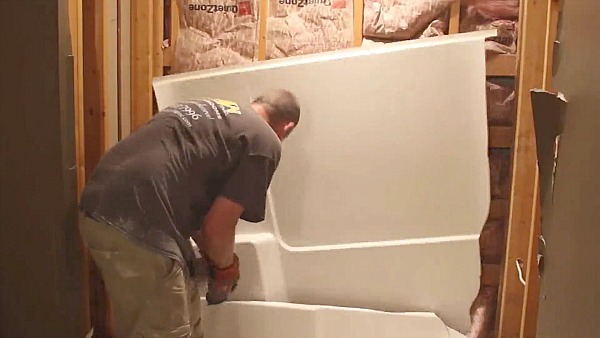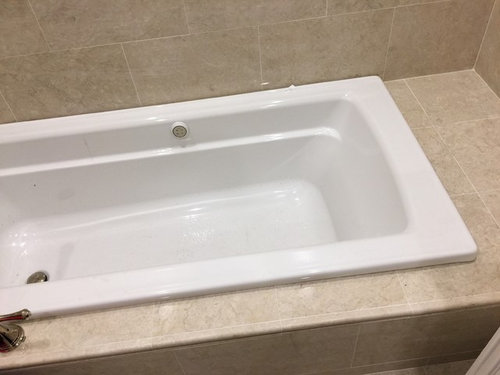Do you find yourself in search of tips concerning How to Install a Bathtub Yourself?

Mounting a tub isn't exactly brain surgery, however it does require strong plumbing, woodworking, and sometimes, tiling skills. Changing an old bath tub with a brand-new one is also a reasonably tough project. If the old bathtub is easily accessible, the job can relocate rapidly; if you have to open a wall to eliminate the old tub and also position the brand-new tub, the task is a lot harder. In either case, the task is within a home handyman's abilities, although you will require a helper to vacate the old tub as well as embeded in the new one. Make certain you have certified yourself for the work and fit trying it. Rather than working with a specialist to take over a halfway-completed job, it is far better to think about using one before you start. Chances are you might require an expert plumber to make tube links.
This short article will certainly help you set up a brand-new bathtub in your shower room if you have actually already gotten a new tub as well as do not need to alter the setup of your previous water supply pipes.
Your devices and material list need to comprise the following:
Removing Old Taps
If you require to replace old faucets with brand-new ones as a part of your setup, then the first thing you ought to do is separate the water supply. After doing so, activate the faucets to drain any type of water continuing to be in the system. The procedure of removing the existing taps can be rather bothersome due to the limited access that is typically the instance.
Use a container wrench (crowsfoot spanner) or a faucet tool to undo the nut that attaches the supply pipelines to the taps. Have a fabric all set for the remaining water that will come from the pipes. When the supply pipelines have been removed, utilize the very same tool to loosen up the nut that holds the faucets onto the bath/basin. You will require to quit the single faucets from transforming during this procedure. As soon as the taps have been gotten rid of, the holes in the bath/basin will have to be cleansed of any old sealing compound.
Prior to going on to fit the new taps, contrast the pipe connections on the old faucets to the brand-new taps. If the old taps are longer than the brand-new faucets, then a shank adapter is required for the brand-new faucets to fit.
Fitting New Taps
If the tails of the brand-new faucets are plastic, after that you will need a plastic adapter to stop damage to the thread. One end of the port fits on the plastic tail of the faucet and the various other end provides a connection to the existing supply pipelines.
If you require to fit a monobloc, then you will certainly call for reducing couplers, which connects the 10mm pipe of the monobloc to the conventional 15mm supply pipeline.
Next off, place the faucet in the mounting hole in the bath/basin making sure that the washers are in location in between the faucet and also the sink. Secure the tap in place with the producer offered backnut. When the faucet is securely in place, the supply pipes can be linked to the tails of the faucets. The faucets can either be attached by utilizing corrugated copper piping or with regular faucet adapters. The previous kind should be attached to the faucet finishes initially, tightening up only by hand. The supply pipes can later be connected to the other end. Tighten up both ends with a spanner after both ends have actually been attached.
Setting up the Tub
Utilizing the two wooden boards under its feet, position the tub in the required position. The wood boards are handy in evenly spreading out the weight of the bath tub over the location of the boards rather than focusing all the weight onto 4 little points.
The next goal is to make certain that the bath tub is leveled all round. This can be accomplished by inspecting the spirit level and readjusting the feet on the bath tub up until the spirit level reads degree.
To set up taps, fit the bottom of the outermost versatile faucet port to the suitable supply pipeline by making a compression sign up with; after that do the same for the other faucet.
Turn on the water supply and also examine all joints as well as new pipework for leakages as well as tighten them if required. Fill the bath tub and also examine the overflow outlet and the regular outlet for leaks.
Ultimately, deal with the bathroom paneling as described in the supplier's instruction manual. Tiling and securing around the tub ought to wait until the tub has actually been utilized at least when as this will resolve it right into its final setting.
Preparing for the Installment
First of all, the supporting framework provided with the bath needs to be fitted (if required) according to the supplier's directions. Next off, fit the taps or mixer to the bath tub. When suitable the tap block, it is important to ensure that if the faucet comes with a plastic washing machine, it is fitted between the bathroom and also the faucets. On a plastic bath, it is additionally sensible to fit a sustaining plate under the taps system to stop stress on the bath tub.
Fit the flexible faucet connectors to the bottom of both faucets utilizing 2 nuts and also olives (in some cases provided with the bathtub). Fit the plug-hole outlet by smearing mastic filler round the sink electrical outlet hole, and after that pass the electrical outlet through the hole in the bath. Make use of the nut supplied by the manufacturer to fit the plug-hole. Analyze the plug-hole electrical outlet for an inlet on the side for the overflow pipe.
Next, fit completion of the flexible overflow pipe to the overflow electrical outlet. After that, screw the pipe to the overflow face which need to be fitted inside the bath. Ensure you make use of all of the supplied washing machines.
Attach the trap to the bottom of the waste electrical outlet on the bath tub by winding the thread of the waste outlet with silicone mastic or PTFE tape, and screw on the catch to the electrical outlet. Connect the bottom of the overflow tube in a similar manner.The bathroom need to now be ready to be suited its final setting.
Tiling Around the Bath tub
In the area where the bath satisfies the floor tile, it is essential to seal the joins with a silicone rubber caulking. This is very important as the installation can relocate enough to crack a stiff seal, triggering the water to permeate the wall surface in between the bath and also the tiling, leading to problems with dampness and also possible leaks to the ceiling below.
You can select from a range of coloured sealers to assimilate your components as well as installations. They are marketed in tubes and also cartridges, and also are capable of sealing gaps up to a width of 3mm (1/8 inch). If you have a larger space to fill up, you can load it with twists of soaked newspaper or soft rope. Keep in mind to constantly fill up the bath tub with water before sealing, to allow for the activity experienced when the bathtub remains in usage. The sealer can fracture fairly early if you do not take into consideration this motion before sealing.
Additionally, ceramic coving or quadrant ceramic tiles can be used to edge the bath or shower tray. Plastic strips of coving, which are easy to use and cut to size, are also conveniently readily available on the marketplace. It is suggested to fit the floor tiles making use of waterproof or water-proof sticky as well as cement.
Bathtub Installation
How Important Is A Bathtub To Your Home?
High-quality baths, showers, and other bathroom updates are necessary when considering a smart investment in your home. It’s a room that you go to every day and one that is constantly being used by guests.The bathroom is one of the top trafficked rooms in a home and also one of the most valuable in terms of home resale.
Install Piping Before Tub
You will be using your existing drain and waste vent system, but pipes required include the hot and cold water supply lines and a pipe leading to a shower head. A mixing valve and shower head are also needed. Air chambers may be required.
Position the Tub
Lower the tub into place so that the continuous flange fits against the wall studs and rests on 1’x4' or 2’x4' supports. Anchor the tub to the enclosure with nails or screws inserted through the flanges into the studs.
NOTE: Remember, bathtubs and shower stalls may require support framing. A bathtub filled with water is extremely heavy, so check building codes and framing support before installing the tub.
Assemble Drain Connections
Assemble the bathtub drain connections by connecting the tub overflow with the tub drain above the trap, not beyond it. The trap will have a compression fitting that screws over the arm of the overflow assembly.
Place a Pipe For the Shower Head
First, locate a brass female threaded winged fitting and attach it to a framing support via a screw or a nail. Then run a pipe up the wall for the shower head. Sweat or solder the other side of the brass fitting to the top of the pipe.
Attaching Hot and Cold Water Lines
Attach your water lines for both hot and cold by sweating these directly into the hot and cold ports of the mixing valve. The mixing valve will be how water enters the tub’s system, not by the pipes themselves.
Install the Spout
Extend a piece of 1/2 inch pipe, or whichever length is specified in the manufacturer’s instructions, for the tub spout. Sweat on a male threaded fitting at the end of the pipe or use a brass nipple of the proper length and a 1/2 inch cap.
NOTE: At this point you should have your rough-in plumbing work inspected before proceeding further.
Check For Leaks
Restore the water pressure and check the drain connection and the supply pipes for any sign of leaking.
estore the Bathroom Wall
Replace the wall with moisture-resistant drywall as a base for your wall covering. Seal the joints between the wall and your new tub with silicone caulk as protection against water seepage.
https://www.berkeys.com/2016/12/02/bathtub-installation-dallas/

I'm just very excited about A Step-by-Step Guide to Installing a Bathtub and I am praying you enjoyed reading the new post. Enjoyed our blog? Please share it. Let somebody else find it. Thanks a lot for your time. Visit us again soon.
Browse Our Site